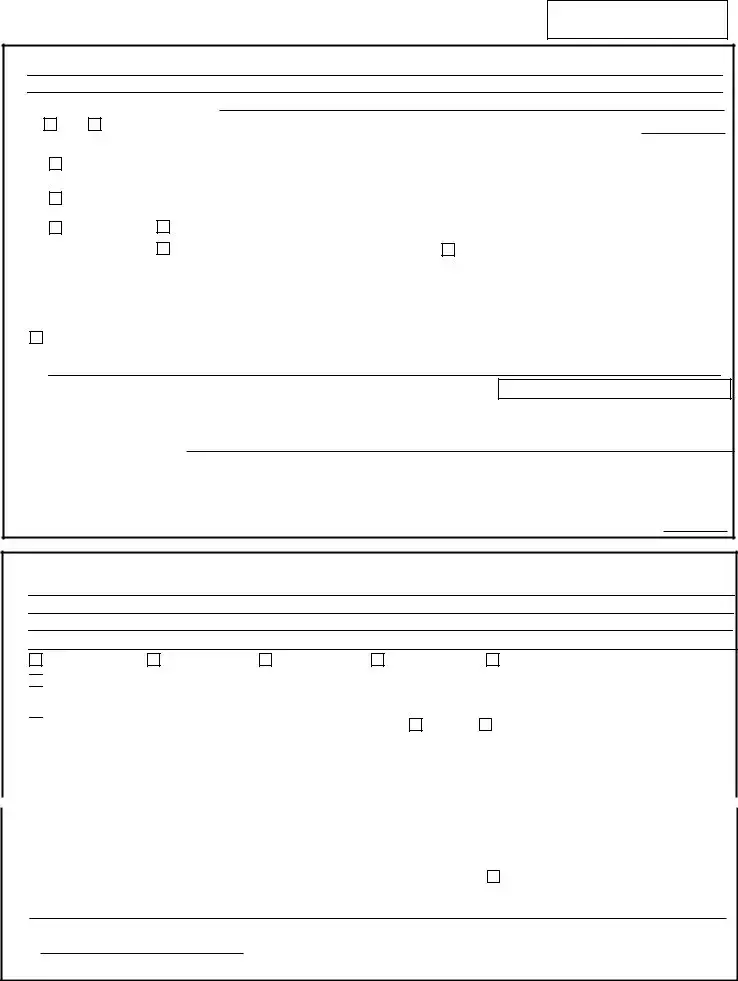EMERGENCY PROTECTIVE ORDER |
EPO-001 |
WARNINGS AND INFORMATION
TO THE RESTRAINED PERSON: VIOLATION OF THIS ORDER IS A MISDEMEANOR PUNISHABLE BY A $1,000 FINE, ONE YEAR IN JAIL, OR BOTH, OR IT MAY BE PUNISHABLE AS A FELONY. THIS PROTECTIVE ORDER SHALL BE ENFORCED BY ALL LAW ENFORCEMENT OFFICERS IN THE STATE OF CALIFORNIA WHO ARE AWARE OF OR SHOWN A COPY OF THE ORDER. THE TERMS AND CONDITIONS OF THIS ORDER REMAIN ENFORCEABLE REGARDLESS OF THE ACTS OF THE PARTIES; IT MAY BE CHANGED ONLY BY ORDER OF THE COURT (PENAL CODE SECTION 13710(b)).
YOU ARE PROHIBITED FROM OWNING, POSSESSING, PURCHASING, RECEIVING, OR ATTEMPTING TO PURCHASE OR RECEIVE A FIREARM OR AMMUNITION. (PENAL CODE SECTIONS 29825(a), 30305(a).) A VIOLATION IS SUBJECT TO A $1,000 FINE AND IMPRISONMENT OR BOTH. WITHIN 24 HOURS OF RECEIPT OF THIS ORDER, YOU MUST TURN IN YOUR FIREARMS TO A LAW ENFORCEMENT AGENCY, SELL THEM TO A LICENSED FIREARMS DEALER, OR STORE THEM WITH A LICENSED FIREARMS DEALER UNTIL THE EXPIRATION OF THIS ORDER. (PENAL CODE SECTION 29830.) PROOF OF SURRENDER, SALE, OR STORAGE MUST BE FILED WITH THE COURT WITHIN 48 HOURS OF RECEIPT OF THIS ORDER.
To the restrained person: This order will last until the date and time in item 5 on the reverse. The protected person may, however, obtain a more permanent restraining order from the court. You may seek the advice of an attorney on any matter connected with this order. The attorney should be consulted promptly so that the attorney may assist you in responding to the order.
A la persona bajo restricción judicial: Esta orden durará hasta la fecha y hora indicada en el punto 5 al dorso. La persona protegida puede, sin embargo, obtener una orden de entredicho (restricción judicial) más permanente de la corte. Usted puede consultar a un abogado en conexión con cualquier asunto relacionado con esta orden. Debe consultar al abogado inmediatamente para que él o ella le pueda ayudar a responder a la orden.
To the protected person: This order will last only until the date and time noted in item 5 on the reverse. If you wish to seek continuing protection, you will have to apply for an order from the court at the address in item 6. You may apply for a protective order free of charge. In the case of an endangered child, you may also apply for a more permanent order at the address in item 6, or if there is a juvenile dependency action pending, you may apply for a more permanent order under section 213.5 of the Welfare and Institutions Code. In the case of a child being abducted, you may apply for a Child Custody and Visitation Order from the court. You may seek the advice of an attorney on any matter connected with your application for any future court orders. The attorney should be consulted promptly so that the attorney may assist you in making your application. You do not have to have an attorney to get the protective order.
A la persona protegida: Esta orden durará sólo hasta la fecha y hora indicada en el punto 5 al dorso. Si usted desea que la protección continúe, tendrá que solicitar una orden de la corte en la dirección indicada en el punto 6. La solicitud de la orden de protección es gratis. En el caso de que un niño o una niña se encuentre en peligro, puede solicitar una orden más permanente en la dirección indicada en el punto 6, o si hay una acción legal pendiente de tutela juvenil, puede solicitar una orden más permanente conforme a la sección 213.5 del código titulado en inglés Welfare and Institutions Code. En el caso del secuestro de un niño o una niña, usted puede solicitar de la corte una orden para la guarda del niño o de la niña (Child Custody and Visitation Order). Puede consultar a un abogado en conexión con cualquier asunto relacionado con las solicitudes de órdenes de la corte que usted presente en el futuro. Debe consultar un abogado inmediatamente para que él o ella le pueda ayudar a presentar su solicitud. Para obtener la orden de protección no es necesario que un abogado le represente.
To law enforcement: The emergency protective order shall be served upon the restrained party by the officer, if the restrained party can reasonably be located, and a copy shall be given to the protected party. A copy shall be filed with the court as soon as practicable after issuance. Also, the officer shall have the order entered into the computer database system for protective and restraining orders maintained by the Department of Justice. The availability of an emergency protective order shall not be affected by the fact that the endangered person has vacated the household to avoid abuse. A law enforcement officer shall use every reasonable means to enforce an emergency protective order. A law enforcement officer who acts in good faith to enforce an emergency protective order shall not be held civilly or criminally liable.
If a child is in danger of being abducted: This order will last only until the date and time noted in item 5 on the reverse. You may apply for a child custody order from the court.
En el caso de peligro de secuestro de un niño o de una niña: Esta orden será válida sólo hasta la hora y fecha indicada en el punto 5 al dorso. Usted puede solicitar de la corte una orden para la guarda del niño o de la niña (Child Custody and Visitation Order).
This emergency protective order is effective when made. This order shall expire on the date and time specified in item 5 on the reverse. The provisions of this emergency protective order take precedence in enforcement over provisions of other existing protective orders between the same protected and restrained persons to the extent the provisions of this order are more restrictive. In other words, the provisions in this emergency protective order take precedence over the provisions in any other protective order, including a criminal protective order, if (1) the person to be protected is already protected by the other protective order, (2) the person to be restrained is subject to that other order, and (3) the provisions in this emergency order are more restrictive than the provisions in that other order. The provisions in another existing protective order remain in effect and take precedence if they are more restrictive than the provisions in this emergency protective order.






